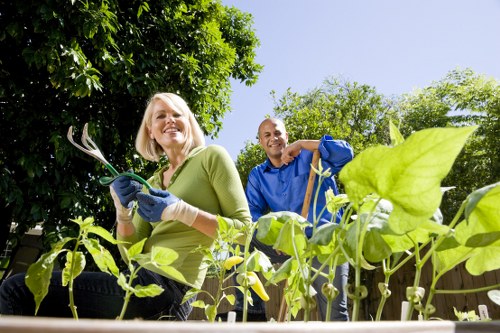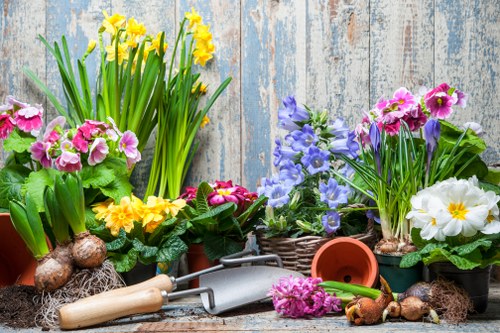Gardeners' Leaves Green: Cultivating a Thriving Garden

Gardening is a rewarding hobby that offers numerous benefits, from beautifying your outdoor space to providing fresh produce. One of the key aspects of successful gardening is ensuring that your plants’ leaves remain green and healthy. Green leaves are a sign of a plant’s overall health, indicating that it is effectively performing photosynthesis—a crucial process for growth and vitality.
Maintaining green leaves involves understanding various factors that contribute to a plant’s well-being. Soil quality, adequate watering, proper sunlight exposure, and appropriate fertilization all play significant roles. Additionally, protecting your plants from pests and diseases is essential to keep their leaves lush and vibrant.
In this article, we will explore the essential tips and techniques for gardeners to keep their leaves green. From soil preparation to pest control, you'll find comprehensive information to help you cultivate a thriving garden.
The Importance of Green Leaves in Gardening

Green leaves are more than just aesthetically pleasing; they are vital for the health of the plant. Leaves are the primary sites of photosynthesis, where plants convert sunlight into energy. This energy is used for growth, reproduction, and the production of fruits and seeds.
Healthy, green leaves indicate that the plant is efficiently absorbing nutrients and water from the soil. It also suggests that the plant is free from stressors such as pests, diseases, or environmental challenges.
Moreover, green leaves contribute to the overall appearance of the garden, creating a lush and inviting environment. They provide shade, reduce soil erosion, and improve air quality by absorbing carbon dioxide and releasing oxygen.
Factors Affecting Leaf Health

- Soil Quality: Nutrient-rich soil provides essential minerals and supports root development.
- Watering Practices: Proper hydration ensures that leaves remain turgid and healthy.
- Sunlight Exposure: Adequate light is necessary for photosynthesis.
- Fertilization: Regular feeding supplies necessary nutrients for growth.
- Pest Control: Protecting leaves from insects and diseases prevents damage and discoloration.
Soil Preparation for Green Leaves

Good soil is the foundation of a healthy garden. It provides support for plant roots, retains moisture, and supplies essential nutrients. To prepare your soil for optimal leaf health:
- Test Your Soil: Determine the pH level and nutrient content to understand what your plants need.
- Amend the Soil: Add organic matter such as compost or manure to improve soil structure and fertility.
- Ensure Proper Drainage: Prevent waterlogging by incorporating materials like sand or perlite if necessary.
- Mulch: Apply a layer of mulch to retain moisture, regulate soil temperature, and suppress weeds.
Proper soil preparation sets the stage for your plants to thrive, ensuring that their leaves remain green and lush throughout the growing season.
Watering Techniques for Healthy Leaves

Watering is a critical aspect of gardening that directly impacts leaf health. Both overwatering and underwatering can cause leaves to yellow, wilt, or develop spots. To maintain green leaves:
- Consistent Schedule: Water your plants regularly, especially during dry spells.
- Deep Watering: Ensure that water reaches the root zone, encouraging deep root growth.
- Morning Watering: Watering in the morning allows leaves to dry during the day, reducing the risk of fungal diseases.
- Proper Drainage: Avoid water stagnation by ensuring that pots and garden beds have adequate drainage.
- Use Mulch: Mulching helps retain moisture and protects the roots from extreme temperatures.
By implementing effective watering techniques, gardeners can keep their plants' leaves green and prevent common watering-related issues.
Sunlight and Its Role in Leaf Health

Sunlight is essential for photosynthesis, the process by which plants produce energy. Adequate sunlight exposure ensures that leaves remain green and vibrant. However, different plants have varying sunlight requirements:
- Full Sun: Plants that require at least 6 hours of direct sunlight daily.
- Partial Shade: Plants that thrive in 3-6 hours of sunlight.
- Shade-Tolerant: Plants that prefer less than 3 hours of direct sunlight.
Understanding the specific sunlight needs of your plants allows you to position them appropriately in your garden, ensuring optimal leaf health and growth.
Fertilization for Lush Green Leaves

Fertilizers supply essential nutrients that support plant growth and leaf health. Key nutrients include nitrogen, phosphorus, and potassium:
- Nitrogen: Promotes leaf growth and maintains green color.
- Phosphorus: Supports root development and energy transfer.
- Potassium: Enhances overall plant health and disease resistance.
Choose a balanced fertilizer that provides these nutrients in appropriate amounts. Follow the recommended application rates to avoid over-fertilization, which can harm plants.
Pest and Disease Management

Pests and diseases can severely affect leaf health, causing discoloration, spots, and wilting. Effective management involves:
- Regular Inspection: Check plants regularly for signs of pests or diseases.
- Integrated Pest Management (IPM): Combine biological, cultural, and chemical methods to control pests.
- Healthy Practices: Maintain plant health through proper watering, feeding, and pruning to resist pests and diseases.
- Natural Predators: Introduce beneficial insects like ladybugs and lacewings to control pest populations.
By proactively managing pests and diseases, gardeners can protect their plants' leaves and ensure a healthy garden environment.
Pruning and Maintenance

Regular pruning and maintenance are essential for promoting healthy leaf growth. Pruning helps remove dead or diseased leaves, improves air circulation, and encourages new growth:
- Remove Dead Leaves: Eliminate any brown or yellow leaves to prevent the spread of diseases.
- Shape the Plant: Prune to maintain the desired shape and size of the plant.
- Encourage Airflow: Thinning out dense foliage allows better light penetration and reduces the risk of fungal infections.
- Promote New Growth: Cutting back can stimulate the plant to produce new, healthy leaves.
Consistent pruning and maintenance practices contribute to the overall health and appearance of your garden.
Local Relevance: Gardening in Leaves Green and Surrounding Areas

Gardening practices can vary based on local climate and conditions. In Leaves Green, as well as its surrounding areas, gardeners benefit from a supportive community and diverse plant varieties. Here are some nearby areas and their unique gardening features:
- Springfield: Known for its extensive nurseries and gardening workshops.
- Riverview: Offers excellent soil conditions ideal for a wide range of plants.
- Oakwood: Popular for its ornamental gardens and flower displays.
- Pine Grove: Home to many fruit tree orchards and berry patches.
- Lakeside: Provides unique aquatic plants and water gardening resources.
- Maple Valley: Renowned for its vibrant fall colors and deciduous trees.
- Brookfield: Features community gardens and cooperative planting initiatives.
- Willow Creek: Offers specialized pest control services and organic gardening options.
- Highland Park: Known for its botanical gardens and plant research centers.
- Sunnydale: Enjoys a sunny climate perfect for sun-loving plants.
- Meadowbrook: Ideal for meadows and wildflower gardens.
- Cedar Springs: Features excellent irrigation systems and water conservation practices.
- Elm Street: Hosts annual gardening fairs and plant exhibitions.
- Cherry Hill: Famous for its cherry blossom trees and ornamental shrubs.
- Fern Valley: Provides resources for shade gardening and fern cultivation.
Conclusion

Keeping your garden's leaves green is a multifaceted process that involves proper soil preparation, effective watering, adequate sunlight, regular fertilization, and vigilant pest control. By understanding and implementing these practices, gardeners can ensure the health and vibrancy of their plants.
The community around Leaves Green and its nearby areas offers a wealth of resources and support for both novice and experienced gardeners. Embrace these tips and local insights to cultivate a thriving garden that showcases lush, green leaves all year round.
Frequently Asked Questions

1. How often should I water my plants to keep the leaves green?
Watering frequency depends on the plant type, soil conditions, and weather. Generally, watering deeply once or twice a week is sufficient. It's important to check the soil moisture regularly and adjust as needed.
2. What type of fertilizer is best for promoting green leaves?
A balanced fertilizer with equal parts nitrogen, phosphorus, and potassium (e.g., 10-10-10) is ideal for promoting healthy, green leaves. Organic options like compost or fish emulsion are also excellent choices.
3. How can I prevent fungal diseases that affect leaf health?
To prevent fungal diseases, ensure proper spacing for airflow, avoid overhead watering, and prune regularly to remove dead or diseased leaves. Using fungicides as a preventive measure can also help manage fungal issues.
4. Are there specific plants that are easier to maintain with green leaves?
Yes, plants like spider plants, pothos, and snake plants are known for their resilience and ability to maintain green leaves with minimal care, making them ideal for both beginners and experienced gardeners.
5. How does mulching contribute to keeping leaves green?
Mulching helps retain soil moisture, regulate temperature, and suppress weeds, all of which contribute to healthier plants and greener leaves. It also adds organic matter to the soil as it decomposes.


